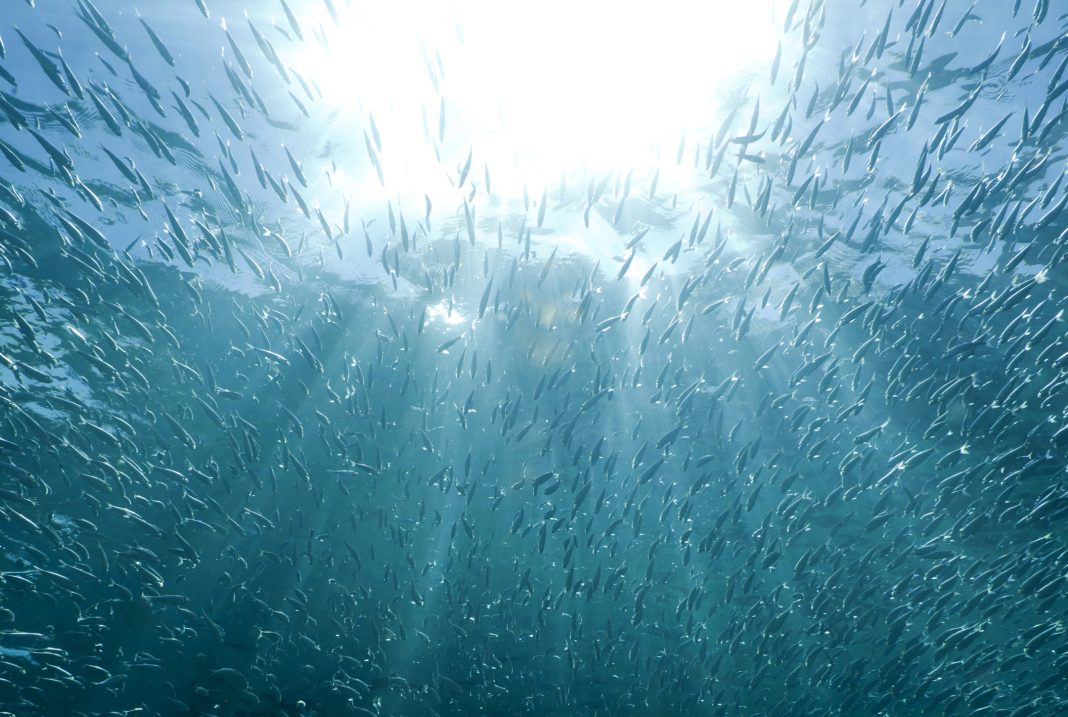Researchers have found that ocean warming, acidification and oxygen depletion have caused a species shift, causing fish to have smaller body sizes
Ocean warming has potentially significant consequences for the composition of fish stocks, including the displacement of individual species. To research this, scientists have used data from the warm period 125,000 years ago and reconstructed its environmental conditions, using sediment samples from the Humboldt Current System off Peru.
The research demonstrated that at warmer temperatures, predominantly smaller, goby-like fish species became dominant, pushing back important food fish species like anchovy.
The trend is independent of fishing pressure and fisheries management
Around 8% of the global catch of marine species comes from the areas off the coasts of Peru, where the near-surface Humboldt Current provides a high nutrient supply, and thus, sufficient food for commercially exploited fish species like anchovy. This area of the sea in South America is one of the most vital and productive fishing grounds on earth.
Additionally, 10% of the total global catch of anchovies alone comes from the region, mostly being processed into fish oil used primarily for aquacultures in China and Norway. However, catches of anchovy in the Humboldt upwelling system are currently declining due to climate change.
Researchers from the Institute of Geosciences at Kiel University and colleagues have used the paleo-oceanographic data from the Humboldt Current region to examine the correlations between temperature, oxygen, nutrient supply, and the occurrence of individual fish species.
Focusing on the warm period about 125,000 years ago, when conditions were similar to those predicted by climate projections – such as the IPCC report – and applying the data to the end of the 21st century, comparable primary production puts water temperatures two degrees Celsius higher than today, and increased oxygen deficiency in mid-depth water masses.
The researchers at Kiel University primarily analysed small fish vertebrae for their paleo-oceanographic studies, which they were able to isolate from the sediment cores. According to the data, smaller, goby-like fish predominated in coastal waters during the ancient warm period, while anchovies made up only a small proportion.
Fish with smaller body sizes can adapt better to warmer temperatures by retaining their high activity even in less oxygenated waters. This is partially due to their larger gill surface area relative to their body volume.
Affecting global food security
First author of the study, Dr. Renato Salvatteci, said: “The conditions of this past warm period that we were able to reconstruct from our samples can definitely be compared to the current development and put in context with future scenarios.
“According to this, there is a clear regime shift towards smaller fish that feel more comfortable in the warm, lower-oxygen conditions. We conclude from our results that the effects of human-induced climate change may have a stronger influence on the evolution of stocks in the region than previously thought.”
Professor Ralph Schneider, co-author of the study, added: “Our studies using sediment cores can give us fairly accurate information about the changes and their dynamics in highly productive coastal waters around the world that have occurred in the wake of different climate states and over different time scales.”
The results indicate that due to increasing warming in the Humboldt Current upwelling area, the ecosystem is heading towards a tipping point beyond which anchovy will begin to retreat and not continue to dominate nearshore fishing grounds.
Salvatteci added: “Despite a flexible, sustainable and adaptive management strategy, anchovy biomass and landings have declined, suggesting that we are closer to the ecological tipping point than suspected.”
Smaller fish are harder to catch and less palatable, and the report determines that the impact on the Peru region, the income of local fisheries and global trade in anchovies could be impacted, potentially affecting global food security.
The results of the study can calculate the extent to which global warming can provide enough food for the world’s population, and predicts what changes can be expected for the development of important fish species like anchovy.











